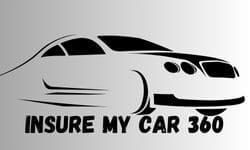Car Insurance: If you drive, where you live has a huge effect on what you pay for car insurance. In 2025, the national insurance environment is still reacting to inflation, rising vehicle repair costs, lawsuit trends, and the lingering effects of severe weather and shifting driving habits, all of which push premiums up or down depending on local conditions. Understanding which states are most expensive (and why) helps you make smarter choices: where to buy, what coverages to prioritise, and where to shop harder for discounts.

Table of Contents
Car Insurance: How much have rates changed recently?
Car insurance increases have been notable, with national year-over-year rises driven by higher repair, replacement, and medical costs. The U.S. Bureau of Labour Statistics and industry studies have shown double-digit jumps in previous years and continued inflationary pressure into 2024–25. That trend helps explain why many states saw meaningful rate increases heading into 2025.
Top 10 States in 2025 (Full-coverage average premiums)
| Rank | State / DC | Avg annual full-coverage premium (2025) | Avg monthly (approx.) | Quick reason why it’s expensive |
|---|---|---|---|---|
| 1 | Louisiana | $2,883. | $240.25 | High accident & uninsured-driver rates, costly weather claims and rising repair costs. |
| 2 | Florida | $2,694. | $224.50 | Hurricane/flood risk, lots of high-risk drivers, and insurer market disruption. |
| 3 | California | $2,416. | $201.33 | Large population, high repair/labour costs, and recent state-level rate approvals. |
| 4 | Colorado | $2,337. | $194.75 | Large population, high repair/labour costs, and recent state-level rate approvals. |
| 5 | South Dakota | $2,280. | $190.00 | Rising claims, changing driving behaviour, and weather/road issues. |
| 6 | Michigan | $2,266. | $188.83 | Unique no-fault rules (historically) and high litigation/medical costs. |
| 7 | Kentucky | $2,228. | $185.67 | Higher claim severity in parts of the state and insurer pricing. |
| 8 | Montana | $2,193. | $182.75 | Sparse population doesn’t always mean cheaper premiums — theft/repair patterns matter. |
| 9 | Washington, D.C. | $2,157. | $179.75 | High density, congestion, and claims per driver in the metro area. |
| 10 | Oklahoma | $2,138. | $178.17 | Storm risks, claim costs and local insurer pricing choices. |
Conclusion
The 2025 ranking shows that geography still rules: living in a high-risk state sets a higher baseline premium, but it’s not destiny. Insurer competition, discounts, driving record and the choices you make (coverage limits, deductibles) matter a lot on top of the state average. Use the table above as a budgeting and negotiation tool; it identifies the pressure points, but shopping and smart policy design are where you can achieve real savings.
Bhakti Rawat is a Founder & Writer of InsureMyCar360.com. This site Provides You with Information Related To the Best Auto Insurance Updates & comparisons. 🔗
